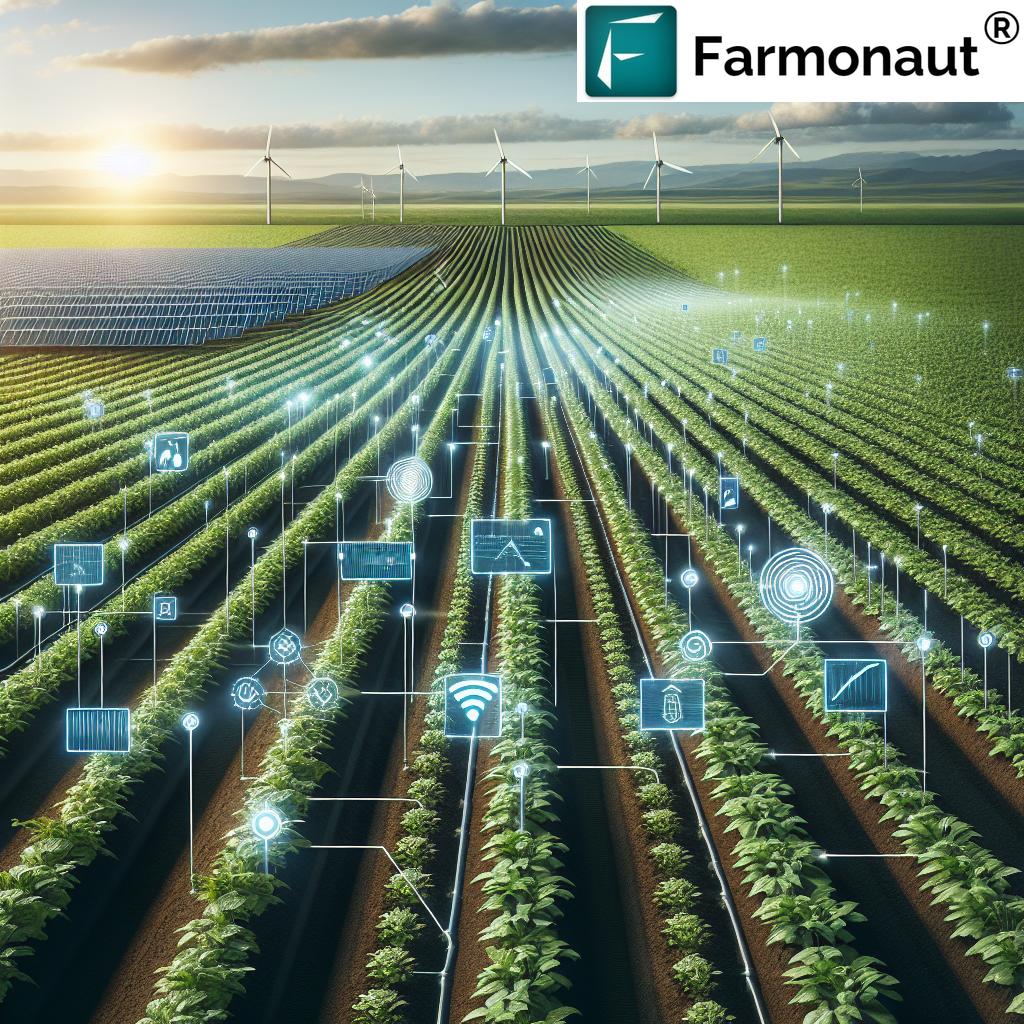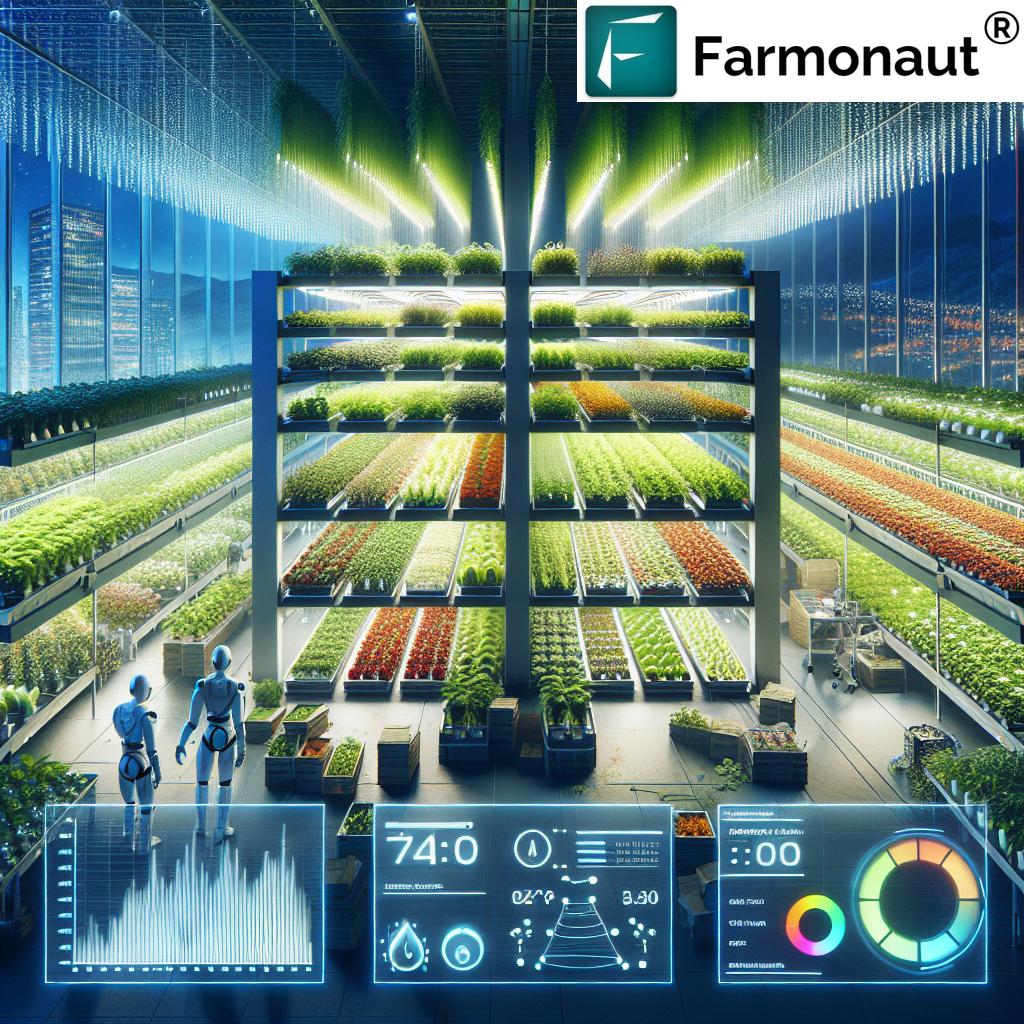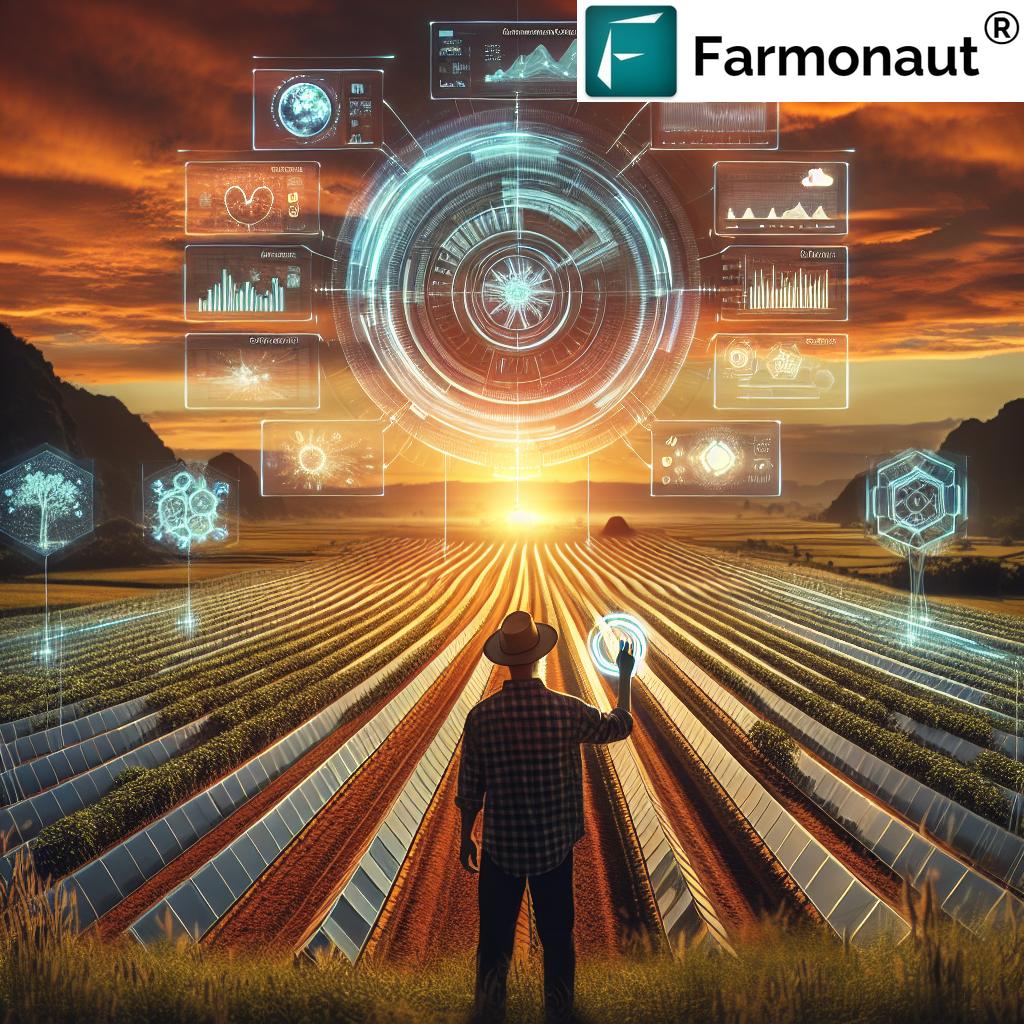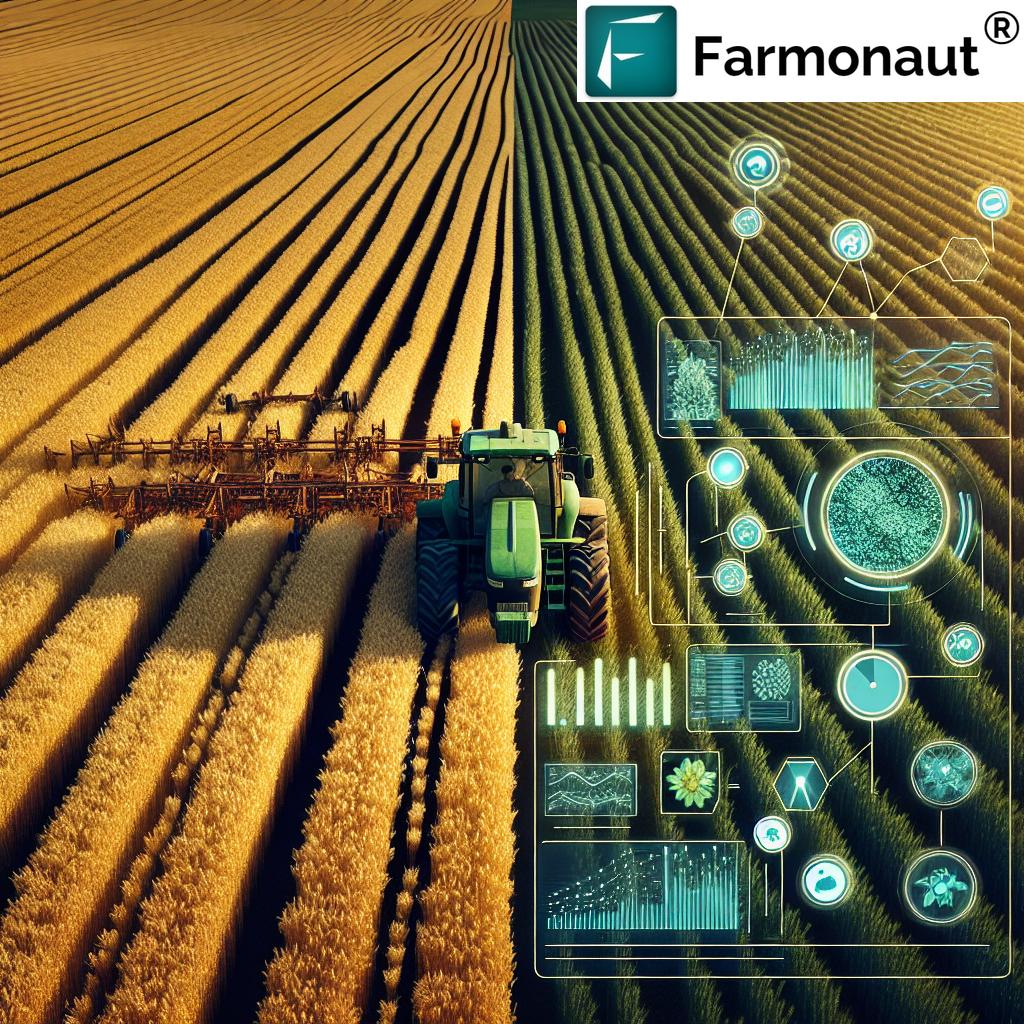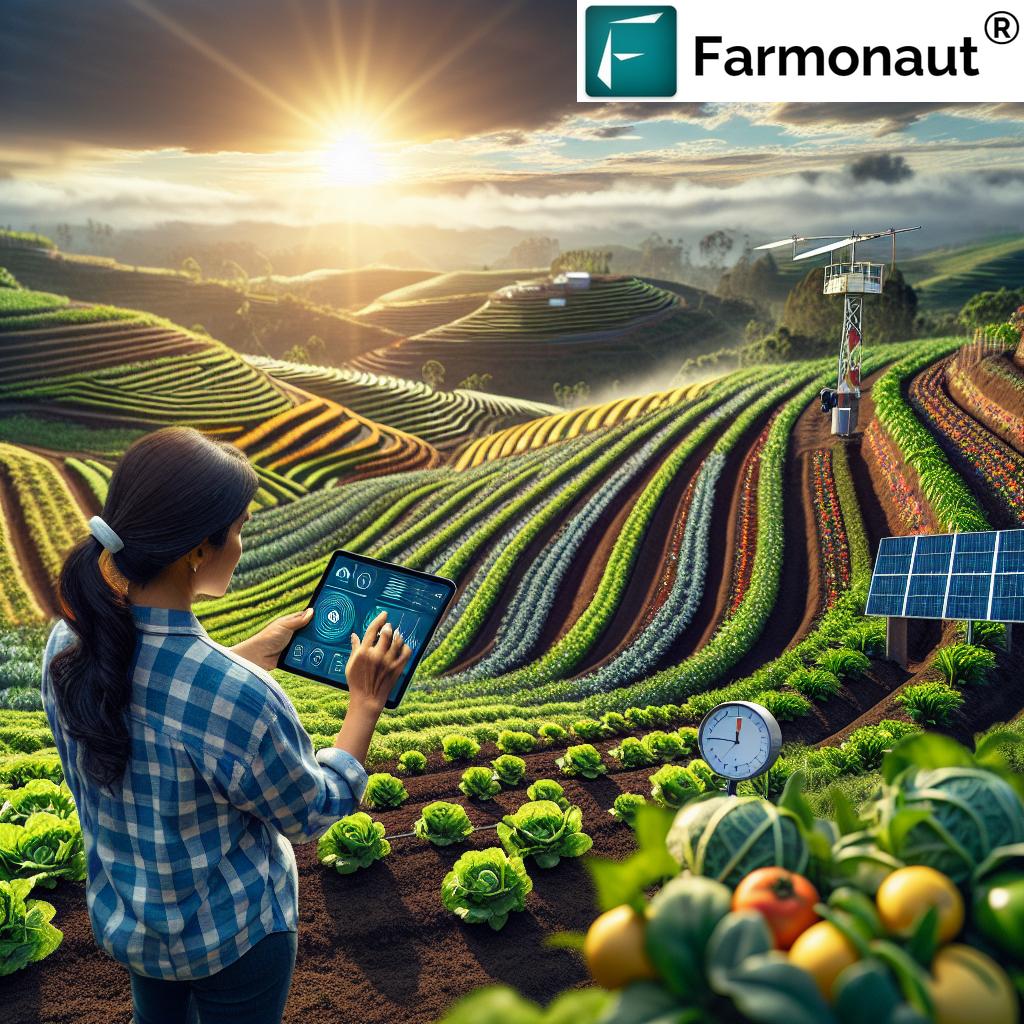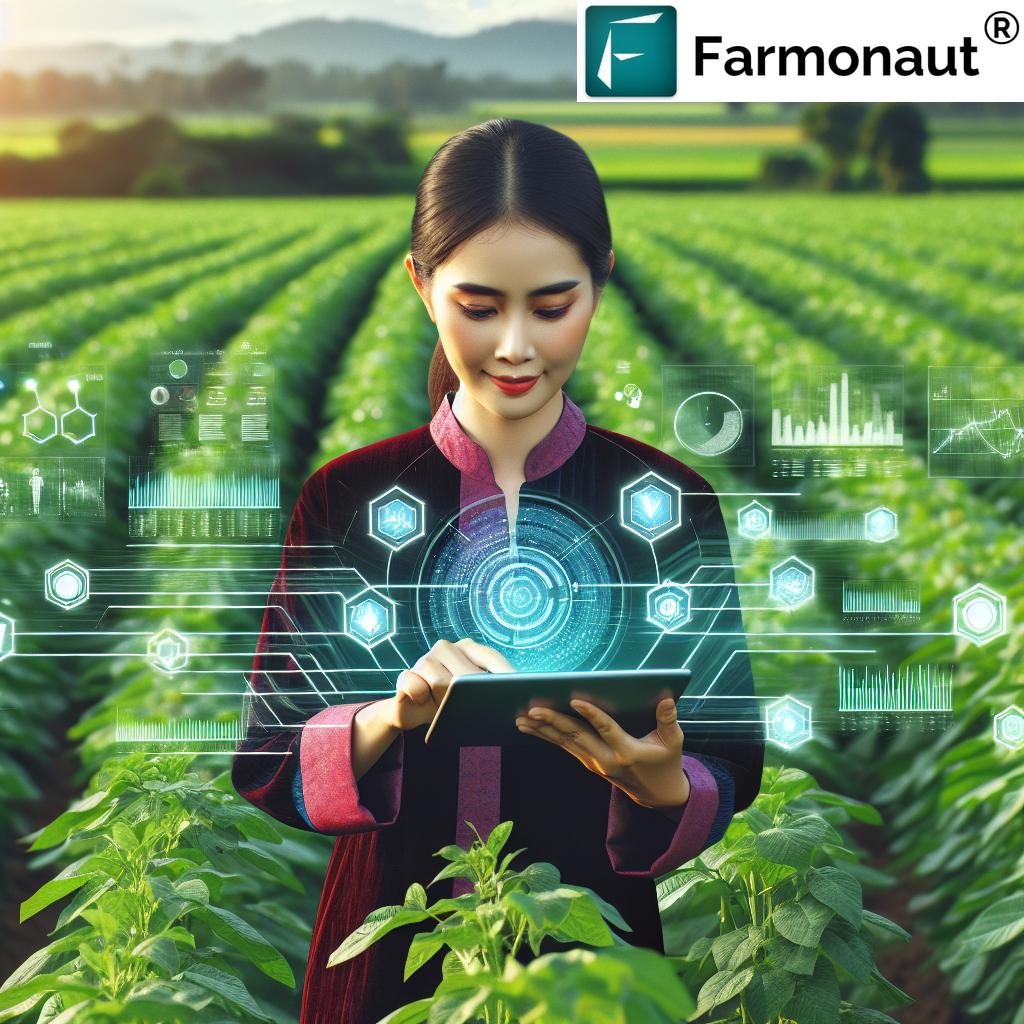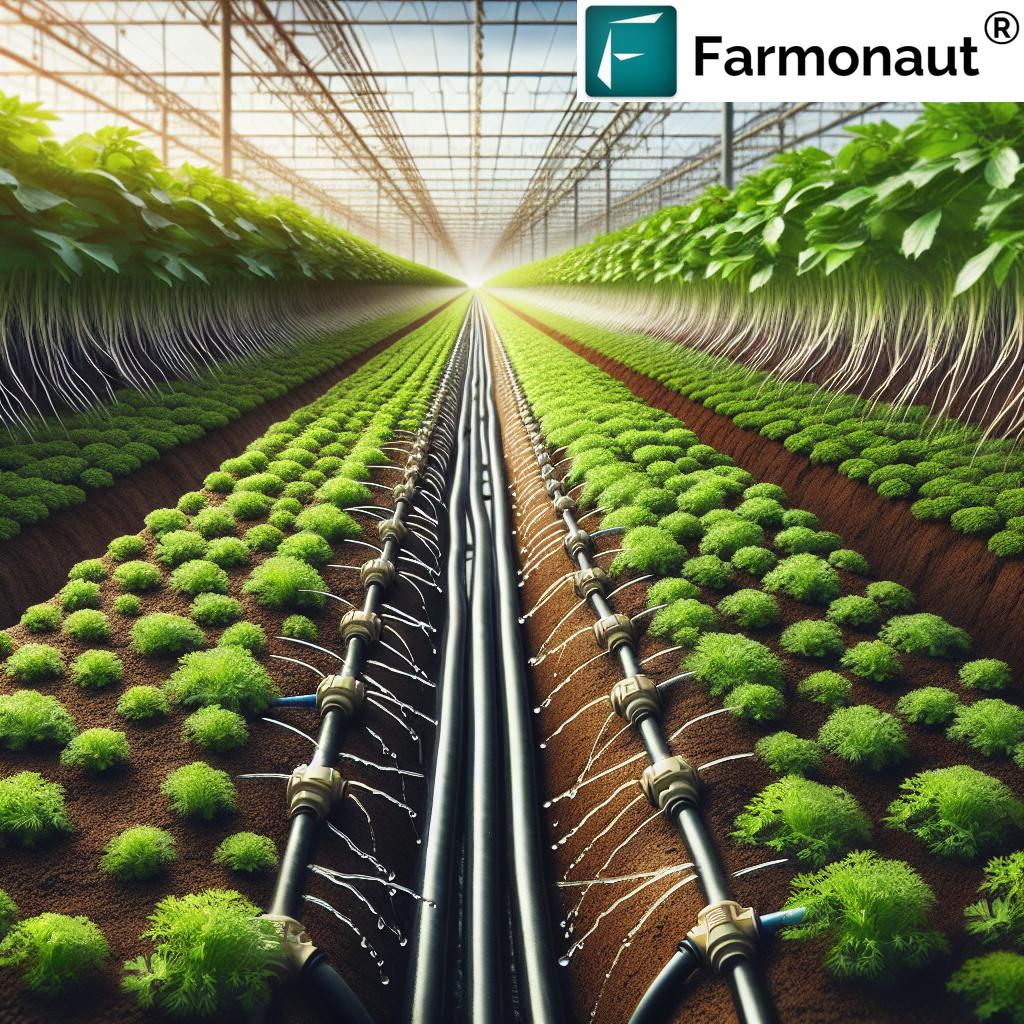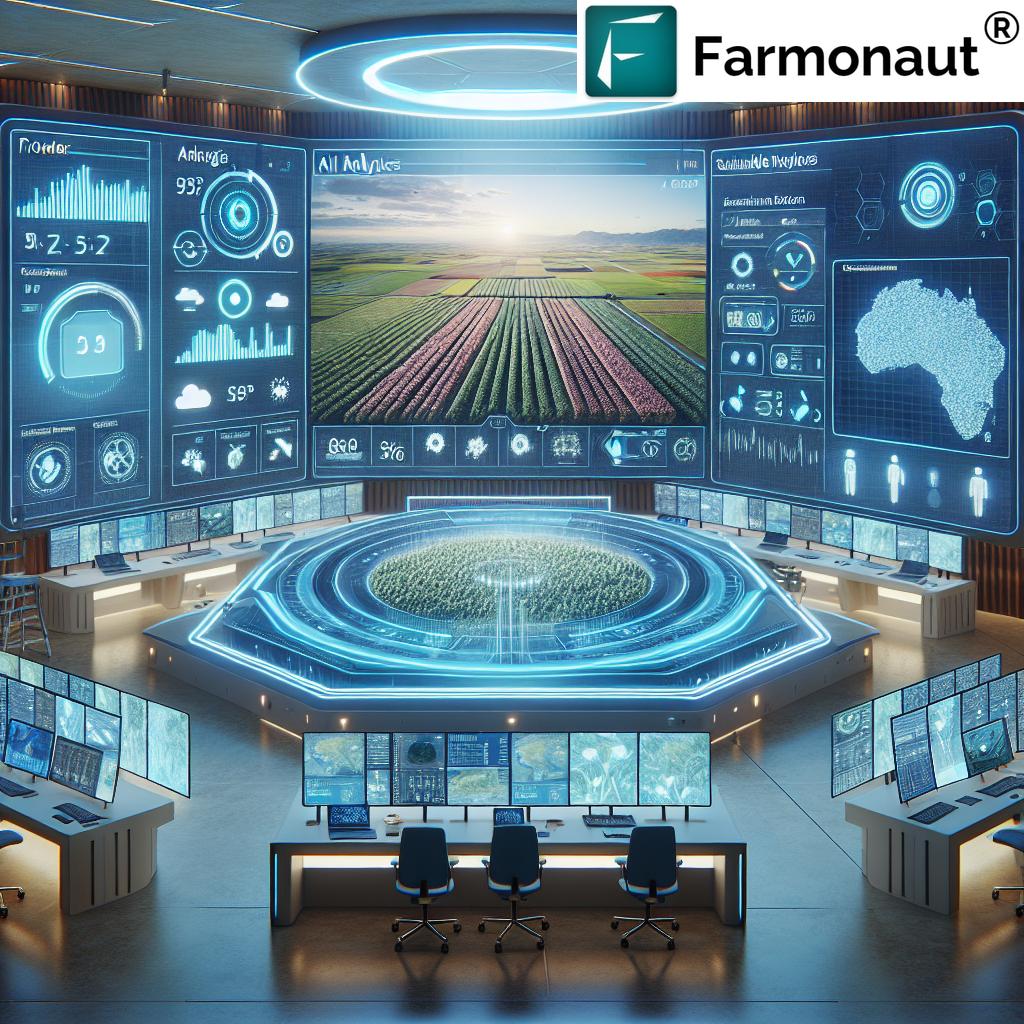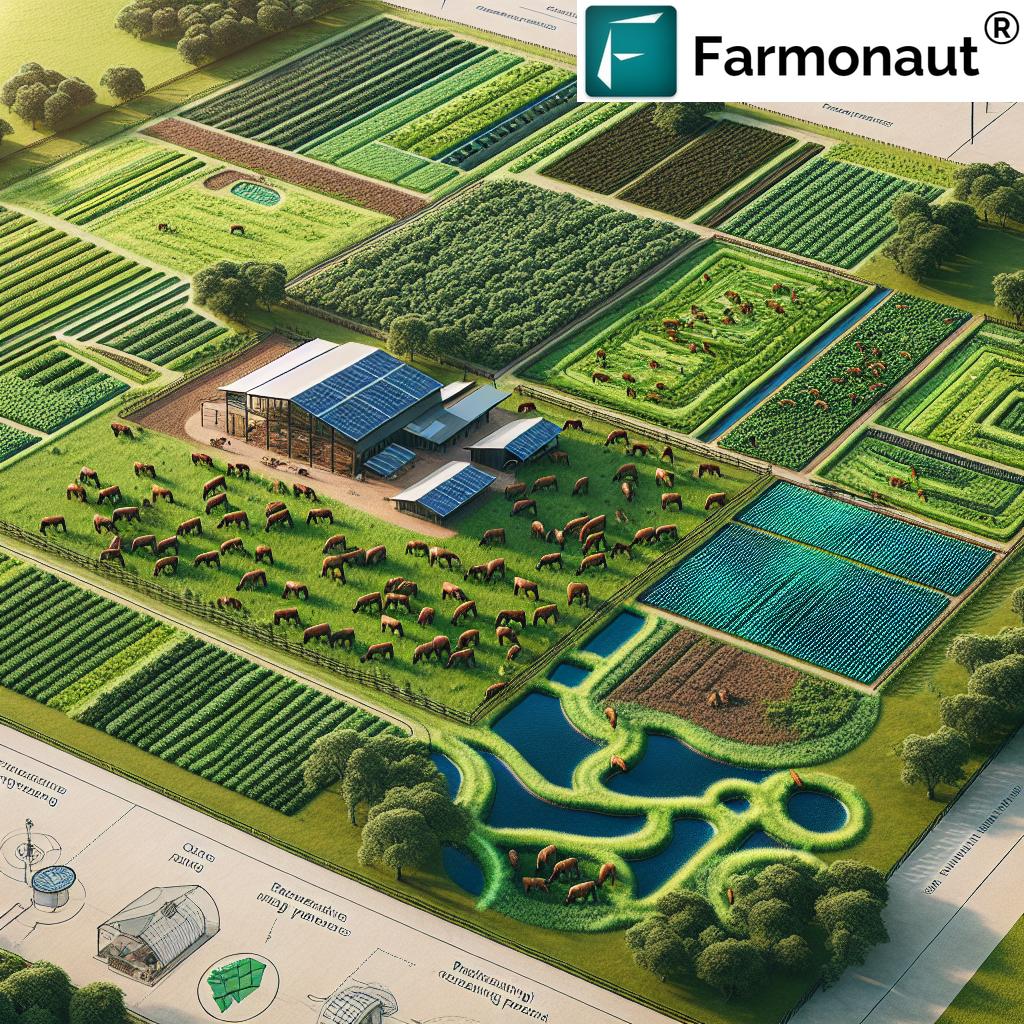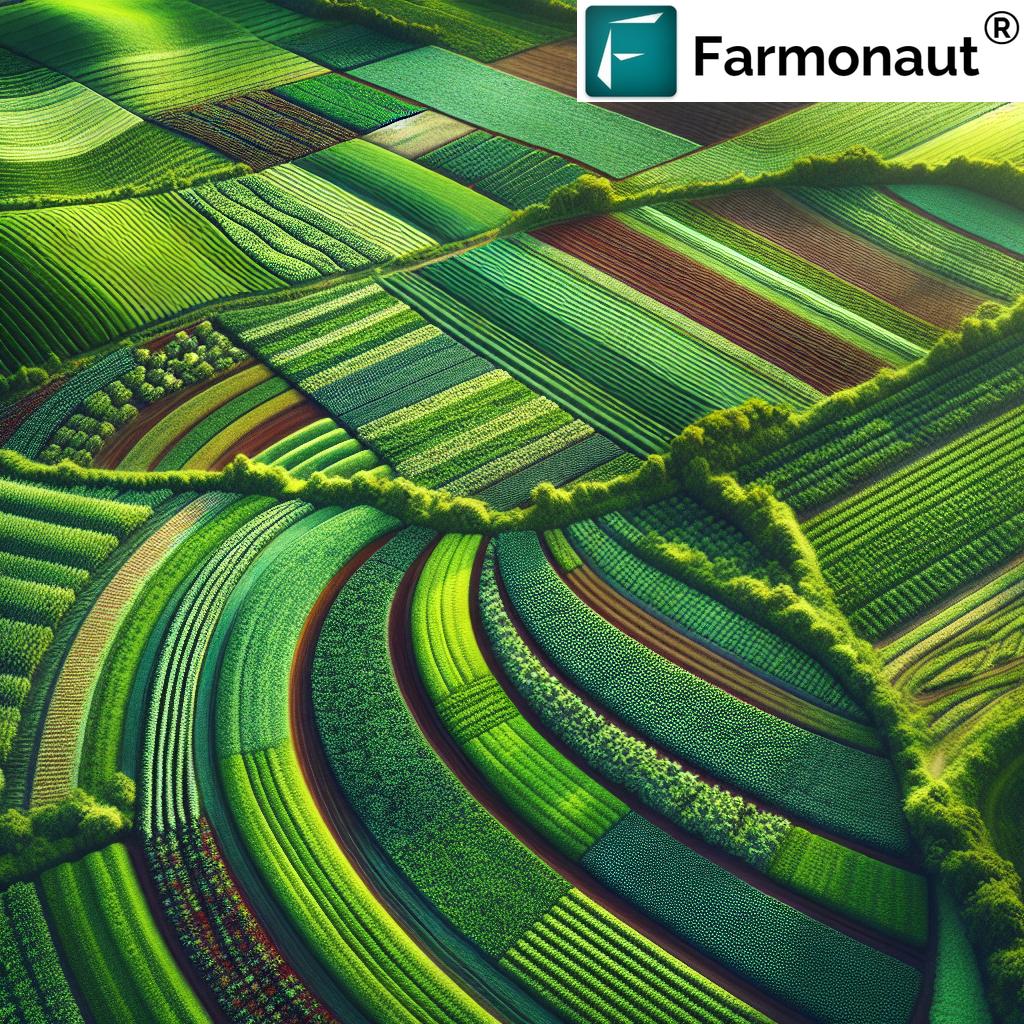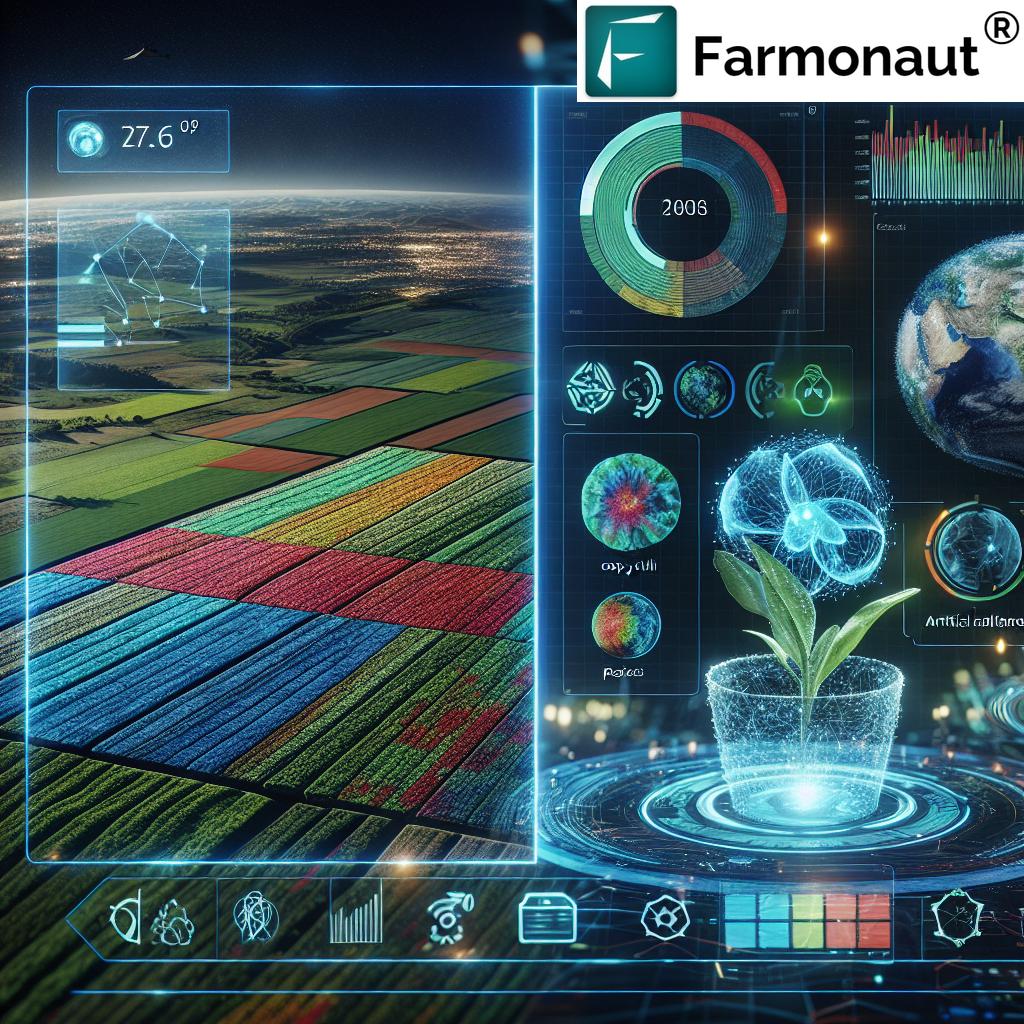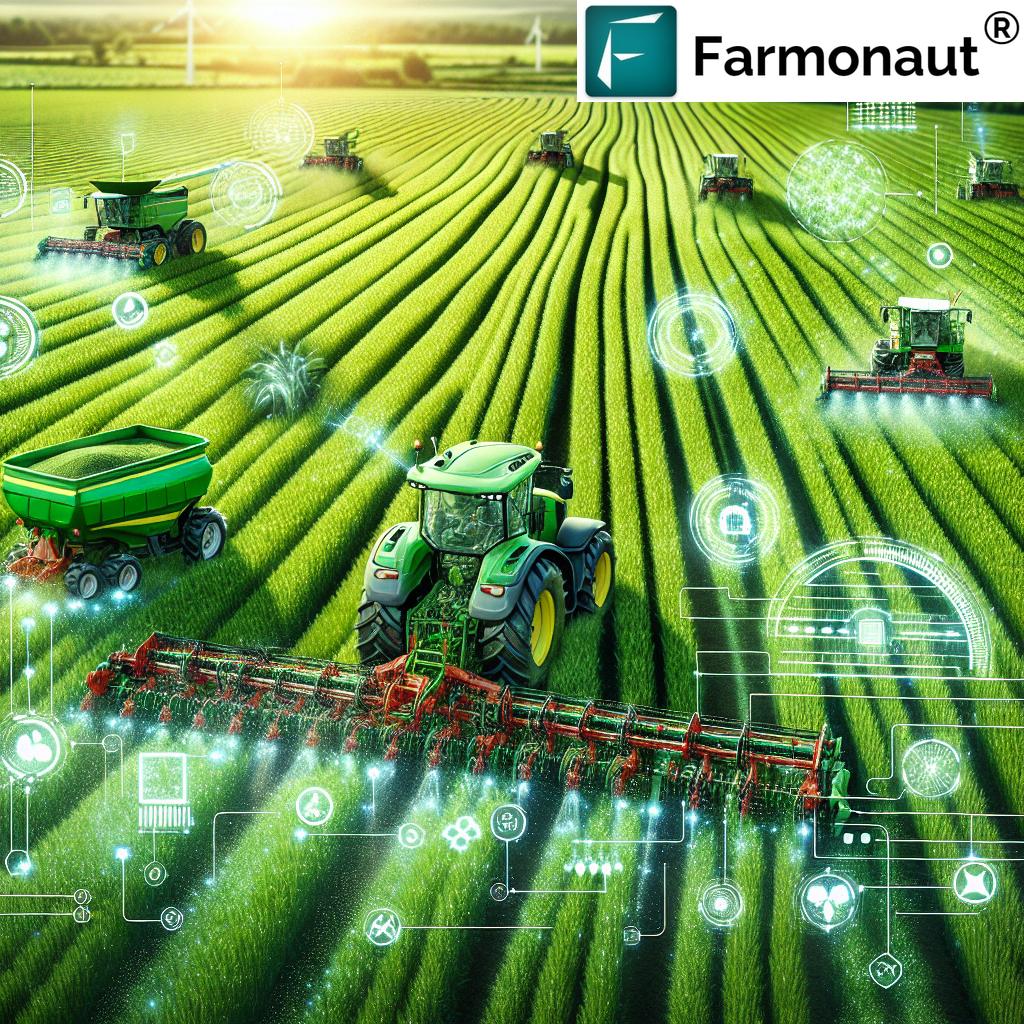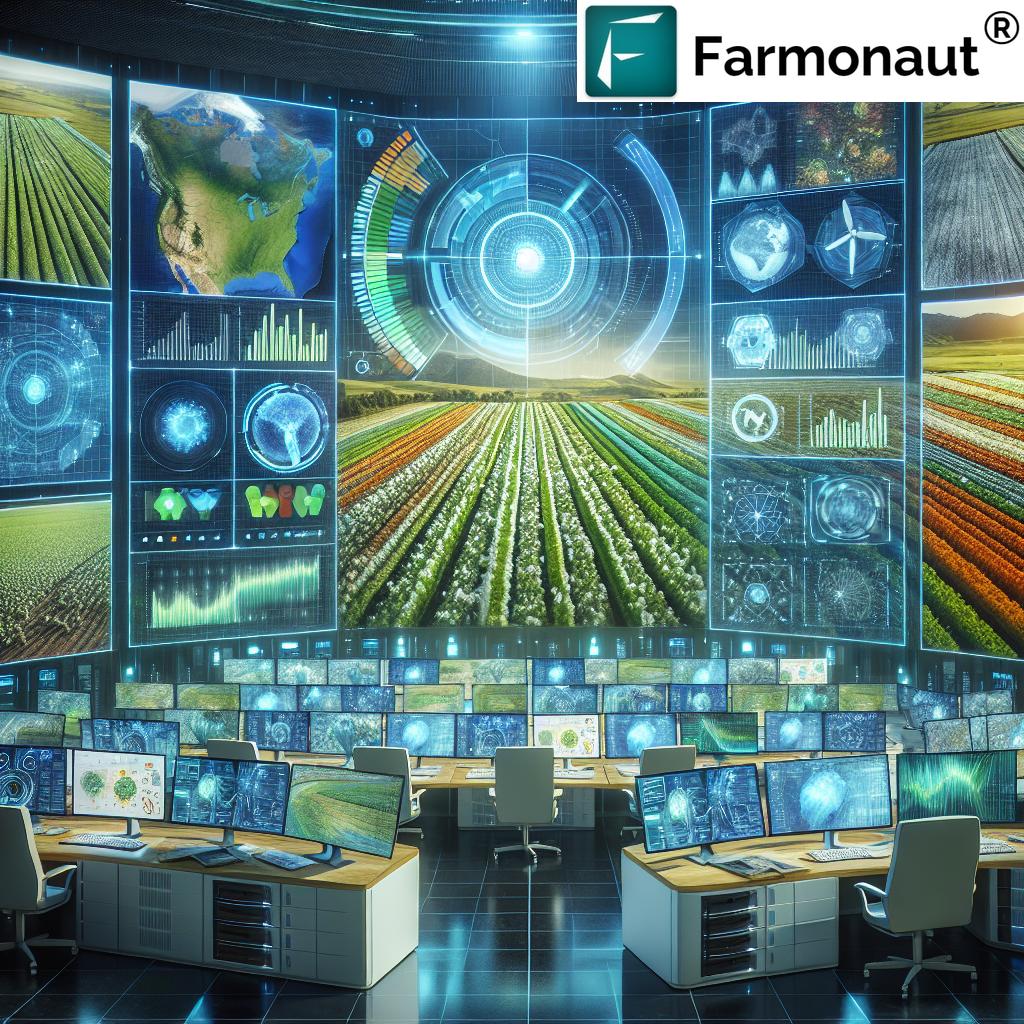Smart Agriculture: 7 Tech Secrets Revolutionizing Farming
Table of Contents
- Introduction: The Promise of Smart Agriculture
- Trivia: Data-Driven Precision
- 7 Tech Secrets Behind Smart Agriculture
- Comparative Feature & Benefit Table
- Farmonaut: Making Smart, Data-Driven Agriculture Accessible
- Applications: How Smart Agriculture Shapes Modern Farming
- Trivia: Satellite Adoption in Modern Farms
- Key Benefits of Smart Agriculture
- Challenges and Considerations
- Future Prospects & Emerging Trends
- Frequently Asked Questions
- Farmonaut Subscription Options
Introduction: The Promise of Smart Agriculture
In today’s rapidly evolving world, smart agriculture stands at the intersection of technology and sustainability, transforming how we grow food and manage resources. Also referred to as precision agriculture or digital farming, this innovative approach merges IoT devices, AI in farming, data-driven agriculture, automation, and real-time analytics to revitalize modern agricultural practices. Facing immense challenges like climate change, water scarcity, rising input costs, and the constant need to increase yields, we as farmers, agribusinesses, and technologists are embracing these new tools to ensure food security, boost efficiency, and make farming more sustainable.
“Precision farming can increase crop yields by up to 30% using data-driven analytics and smart sensors.”
The integration of advanced technologies allows us to monitor soil and crop conditions, analyze real-time data, optimize water usage, and minimize resource waste. By leveraging satellite imagery, big data analytics, and smart IoT solutions, the entire agricultural ecosystem—including individual farmers, agribusinesses, government bodies, and supply chain partners—benefits from reduced costs, increased yields, and a smaller environmental footprint.
Why This Matters
By understanding the 7 key technologies revolutionizing agriculture, we gain a roadmap for adopting smart agriculture solutions that lead to greater productivity, reduced inputs, and improved sustainability, while enabling better management of the natural resources upon which we all depend.
7 Tech Secrets Behind Smart Agriculture
Let’s explore the seven core technologies propelling smart agriculture and reshaping the future of food production. Each secret equips us with powerful tools for increasing yields, reducing labor costs, and protecting the environment.
1. Internet of Things (IoT): Connecting the Farm for Actionable Data
The backbone of smart agriculture is the Internet of Things—a network of smart sensors, weather stations, and connected devices seamlessly integrated into our fields and farm operations. These agricultural IoT solutions collect real-time data on:
- Soil moisture, temperature, and nutrient levels — enabling optimized irrigation schedules, tailored fertilizer application, and precise inputs that maximize crop health.
- Climate and environmental conditions — providing early warnings for extreme events and supporting better crop selection and rotation strategies.
- Equipment tracking — using GPS and telematics for fleet management (learn more), optimizing machinery use, reducing waste, and lowering emissions.
Advanced sensors make it possible for us to automate irrigation, monitor livestock health, detect diseases early, and maintain an optimum growing environment for our crops. The result: data-driven agriculture decisions based on facts, not guesswork.
2. Artificial Intelligence (AI) & Machine Learning (ML): Turning Data Into Decisions
We handle enormous amounts of data—from IoT sensors, satellite imagery, drones, and more. That’s where AI in farming and machine learning (ML) step in. These technologies analyze heterogeneous data from multiple sources and deliver concrete, actionable analysis such as:
- Accurate weather forecasting
- Pest and disease detection by recognizing patterns and symptoms on crops
- Prediction of yields and crop performance
- Personalized crop management and input optimization
Our ability to integrate AI-based advisory (like Farmonaut’s Jeevn AI Advisory) means farmers receive timely, customized guidance for maximizing production with minimal resources.
3. Automation & Robotics: The Engine of Modern Agricultural Efficiency
We’re witnessing a revolution with automation and robotics on the farm. Autonomous tractors, robotic planters, weeders, and harvesters deliver:
- Precise planting, spraying, and harvesting—reducing labor costs and improving productivity.
- Minimized resource use—applying water, pesticides, and fertilizers exactly where needed, cutting waste and chemical impact.
- Enhanced safety and reduced drudgery for farm workers.
With advanced GPS guidance and smart controls, these machines operate 24/7 with incredible precision, ensuring our fields are managed more efficiently than ever before.
“Over 70% of modern farms now use satellite imagery to monitor crop health and optimize resource use.”
4. Drones & UAVs: Aerial Analytics for Every Acre
Drones and other unmanned aerial vehicles (UAVs) bring a bird’s-eye view to crop monitoring and analytics. By flying over fields and capturing multispectral imagery, drones help us:
- Detect crop diseases, nutrient deficiencies, and pest outbreaks early
- Map soil conditions and variable plant growth
- Apply pesticides and fertilizers with unmatched precision, reducing chemical usage
- Monitor irrigation coverage and water stress
This aerial data collection provides the granular intelligence needed to optimize schedules, target interventions, and improve yields while reducing costs.
5. Data Analytics & Big Data: Turning Information Into Insights
Every sensor, every field operation, and every harvest generates valuable data. Yet, the true superpower of smart agriculture lies in our ability to analyze and interpret it. Big data analytics platforms help:
- Spot trends in field performance, soil health, and market demand
- Make evidence-based decisions on crop rotation, planting, and resource allocation
- Support supply chain management and product traceability
With tools like Farmonaut’s blockchain-based product traceability, we can transparently and securely track a product’s journey—building consumer trust and reducing fraud across the food system.
6. Satellites: Eye in the Sky for Precision Monitoring
We now harness satellite imagery to monitor entire regions, fields, and farms—no matter their size or location. Platforms utilizing satellite-based crop health monitoring (like Farmonaut) deliver:
- Real-time mapping of NDVI vegetation health and soil moisture
- Early warning for drought, flooding, or pest outbreaks
- Accurate, reliable yield forecasting
By using satellites, even smallholder farmers can access precision insights to drive up yields and optimize every hectare—affordably and globally.
7. Smart Irrigation Systems: Water-Efficient Agriculture for a Hotter Climate
Access to water is often a limiting factor for global agriculture, especially with climate change driving increased variability. Smart irrigation systems employ:
- Real-time soil moisture sensors
- Automated scheduling driven by weather forecasts
- Data-based optimization to deliver water only where and when needed
These systems can reduce water use by up to 70%, conserve energy, and improve crop yields, making sustainable irrigation not just possible—but practical.
Comparative Feature & Benefit Table: 7 Game-Changing Technologies in Smart Agriculture
| Technology Name | Functionality | Estimated Yield Improvement (%) | Estimated Cost Savings (%) | Sustainability Impact (Score /10) | Example Application |
|---|---|---|---|---|---|
| GPS-Guided Tractors & Robotics | Automates field tasks (planting, tilling, harvesting) with high precision | 10-25% | 15-35% | 8 | Autonomous harvesting, reduced fuel/use of inputs, less soil compaction |
| Drone Mapping & UAVs | Aerial crop monitoring, disease/pest detection, and precision spraying | 5-15% | 10-20% | 7 | Crop stress mapping, zone-based variable input application |
| IoT Sensors | Continuous field data collection (moisture, temperature, nutrients) | 15-30% | 10-25% | 9 | Precision irrigation, real-time soil and weather feedback |
| Big Data Analytics Platforms | Integrates, visualizes, and analyzes multisource agricultural data | 10-20% | 5-15% | 9 | Yield forecasting, strategic crop selection, supply chain traceability |
| Automated Irrigation Systems | Optimizes water delivery using sensors, weather, and crop data | 15-25% | 20-40% | 10 | Sensor-based drip and sprinkler irrigation, drought management |
| AI Crop Monitoring & ML Models | Predicts pest/disease risk, climate stress, and crop needs for real-time response | 20-30% | 20-25% | 9 | AI-driven advisories for pest control and yield optimization |
| Satellite Imagery Platforms | Large-scale crop health and moisture monitoring, disaster alerts | 10-22% | 10-18% | 9 | NDVI maps, early warning for drought, regional yield estimation |
Farmonaut: Making Smart, Data-Driven Agriculture Accessible
At Farmonaut, we believe that smart agriculture should be affordable and accessible for every farmer, everywhere. Our platform integrates advanced satellite-based monitoring, AI-driven advisory systems, and blockchain for supply chain traceability, making next-generation precision farming technologies available to all.
- Real-Time Crop Health Analytics: Our multispectral satellite imagery delivers actionable NDVI, soil moisture, and irrigation insights (try Farmonaut’s Web, Android, or iOS App).
- AI in Farming: The Jeevn AI Advisory System processes climate, soil, and crop data to provide customized and precise recommendations for planting schedules, resource management, and pest prevention.
- Blockchain-Based Traceability: Enable transparent supply chains with verifiable, secure origin data from seed to shelf (Product Traceability Solution).
- Fleet Management: Track agricultural fleets and optimize logistics to save time, fuel, and costs (Fleet Management Platform).
- Carbon Footprinting: Monitor and manage your farm’s environmental impact with real-time emissions tracking and actionable sustainability insights (Farmonaut Carbon Footprinting).
- API Integration: Use our API and developer docs to embed Farmonaut’s powerful analytics into your own farm management or agri-tech solutions.
Our solutions adapt to farms of any size—from smallholder to large-scale agricultural operations (see our Agro Admin app). By leveraging digital farming tools, you can reduce input costs, boost yields, and strengthen climate resilience—all while supporting a more sustainable future.
Applications: How Smart Agriculture Shapes Modern Farming
Beyond the technologies themselves, the integration of these advancements unlocks powerful applications that impact day-to-day farm management and long-term success. Here’s how smart agriculture transforms real farms worldwide:
Precision Farming: Maximizing Every Input
The heart of precision farming technologies is the ability to apply water, fertilizers, and pesticides only where, when, and in the amounts crops truly need. GPS-guided machinery and IoT-based field mapping enable variable-rate application, cutting waste and costs while boosting yields.
- Example: Farmonaut’s plantation advisory layers satellite biomass and soil data for targeted resource deployment, improving outcomes and profitability.
Controlled Environment Agriculture (CEA) & Vertical Farming Technology
Modern techniques such as greenhouses and vertical farming technology (using stacked layers to grow crops) maintain tightly controlled temperature, humidity, and light conditions—allowing year-round production, higher density, and efficient water and nutrient use even in urban environments.
Agrivoltaic Systems: Integrating Solar with Crop Production
In innovative regions like the United States, agrivoltaic systems combine solar panels with agricultural land, so crops and renewable energy are harvested in synergy. The panels provide partial shading, reduce water evaporation, and generate green energy, supporting both food and energy security.
Livestock Monitoring & Smart Tags
Wearable and embedded sensors now monitor livestock health, nutrition, and behavior in real time. These insights support early disease detection, optimize feeding and breeding schedules, and enhance overall animal welfare, leading to higher productivity and reduced losses.
Data-Driven Supply Management & Blockchain Traceability
Combining big data and blockchain allows us to manage supply chains transparently. Each step, from planting and harvesting to processing and delivery, can be securely traced—building trust, protecting brand value, and ensuring compliance.
Key Benefits of Smart Agriculture
- Higher Yields & Increased Productivity: By matching inputs to precise field and crop requirements, we achieve optimal harvests and efficient livestock management.
- Resource Efficiency: Every drop of water, kilogram of fertilizer, and application of pesticide is used wisely. This targeted approach lowers costs, reduces waste, and minimizes his environmental impact.
- Cost Reduction: Automation, data-driven scheduling, and reduced manual labor lead to significant cost savings at every stage.
- Climate Resilience: Smart agriculture enables us to rapidly respond to climate change, variable conditions, and extreme weather events—protecting both crops and profits.
- Sustainability: Agrivoltaics, solar-powered devices, and carbon footprint monitoring help us move toward truly sustainable farming practices.
- Transparency & Food Security: Blockchain-based solutions ensure product traceability and build consumer confidence, while improved productivity secures the food supply for a growing global population.
Want to ensure your farm’s sustainability and traceability? Explore Farmonaut’s:
- Carbon Footprinting solutions for emissions tracking
- Product Traceability tools for secure, blockchain-powered transparency
Challenges and Considerations in Implementing Smart Agriculture Technologies
While the potential of smart agriculture is tremendous, its adoption comes with hurdles we must address for maximum impact:
- High Initial Investment: Many advanced technologies require significant startup capital—though solutions like Farmonaut’s affordable, subscription-based model (see below) lower this barrier.
- Technical Expertise: Effective use of AI in farming, IoT, and data analysis requires ongoing education and support.
- Data Security & Privacy: With more data collection comes greater responsibility for security and privacy—especially in digital recordkeeping and financial transactions.
- Infrastructure Limitations: Reliable internet and energy access may limit technology deployment in remote areas.
- Environmental Trade-Offs: Some technologies, like vertical farming, can carry high energy demands—highlighting the importance of integrating renewable energy sources such as solar.
By incrementally adopting and adapting these solutions—and using scalable options (large-scale management platform)—even smaller or resource-limited farms can join the smart agriculture movement.
The Future of Smart Agriculture: Trends, Innovations, and Next Steps
We stand at the threshold of a sweeping transformation. What lies ahead for smart agriculture?
- Affordable, User-Friendly Tech: Field-ready solutions tailored for smallholders and emerging economies will expand the reach of data-driven farming globally.
- Blockchain Integration: Secure, decentralized tracking will redefine food safety, authenticity, and fair trade in agriculture.
- Nanotechnology & Targeted Delivery: Micro-scale sensors and delivery systems for nutrients and pesticides will enhance crop resilience while reducing chemical usage.
- Climate-Smart Practices: From carbon footprinting to adaptive planting schedules and digital pest detection, our focus will sharpen on long-term resilience.
- API-Based Integration: More platforms and developers will integrate field intelligence and agronomic data through robust APIs (Farmonaut’s API).
With ongoing research and democratization of agricultural IoT solutions, the full promise of precision agriculture—greater yields, sustainability, and food security—is well within reach.
Frequently Asked Questions (FAQ): Smart Agriculture & Farmonaut
-
Q1: What is smart agriculture?
A: Smart agriculture is the use of advanced technologies—like IoT, AI, data analytics, robotics, drones, and satellite imagery—to optimize farm productivity, enhance resource efficiency, and support sustainable practices. It transforms traditional farming by making it more data-driven and precise. -
Q2: How can Farmonaut help my farm?
A: Farmonaut delivers affordable, satellite-based monitoring, AI-powered crop advisories, blockchain traceability, and more, helping you make better decisions, reduce input costs, enhance crop health, and improve sustainability. The platform’s flexibility supports individual farmers, agribusinesses, and large-scale operators alike. -
Q3: What is precision farming, and how is it different from traditional farming?
A: Precision farming uses technology to apply the right amount of inputs like water, fertilizers, and pesticides at the right time and location, reducing waste and increasing yield. It’s more targeted and efficient than traditional, one-size-fits-all methods. -
Q4: What are the benefits of integrating blockchain in agriculture?
A: Blockchain enables secure, unchangeable records for every step of the supply chain, ensuring product traceability, reducing fraud, verifying certifications, and building consumer trust. -
Q5: Are smart agriculture solutions expensive to implement?
A: While some advanced techs require investment, Farmonaut and similar data-driven solutions are designed to be scalable and affordable, making precision agriculture accessible for even small and medium-sized farms through flexible subscriptions. -
Q6: How does smart irrigation reduce water usage?
A: By leveraging soil moisture sensors, weather data, and AI-based scheduling, smart irrigation systems apply exactly the amount of water crops need, minimizing loss from evaporation, runoff, or overwatering—often reducing overall water usage by up to 70%. -
Q7: Which Farmonaut app is right for me?
A: Try the Farmonaut web app for browser-based management, the Android app, or the iOS app based on your device. Large-scale farm managers and enterprises can explore the Agro Admin platform.
Farmonaut Subscription Options
Ready to experience the benefits of smart agriculture for yourself? Farmonaut offers flexible subscriptions suitable for individual farmers, cooperatives, agribusinesses, and government institutions.
Conclusion: Empowering the Agricultural Revolution—One Data Point at a Time
We are at the dawn of a new era. With the adoption of smart agriculture solutions, powered by IoT sensors, AI in farming, automation, satellite-based analytics, and big data, the world’s farms—large and small, North and South, rural and urban—can produce more with less, adapt to climate volatility, and thrive for generations. Platforms like Farmonaut ensure that these game-changing innovations are not restricted to the privileged few, but accessible to all, enabling smarter, more sustainable farming worldwide.
Let’s harness the power of technology to feed our future, preserve our planet, and revolutionize agriculture—together.


